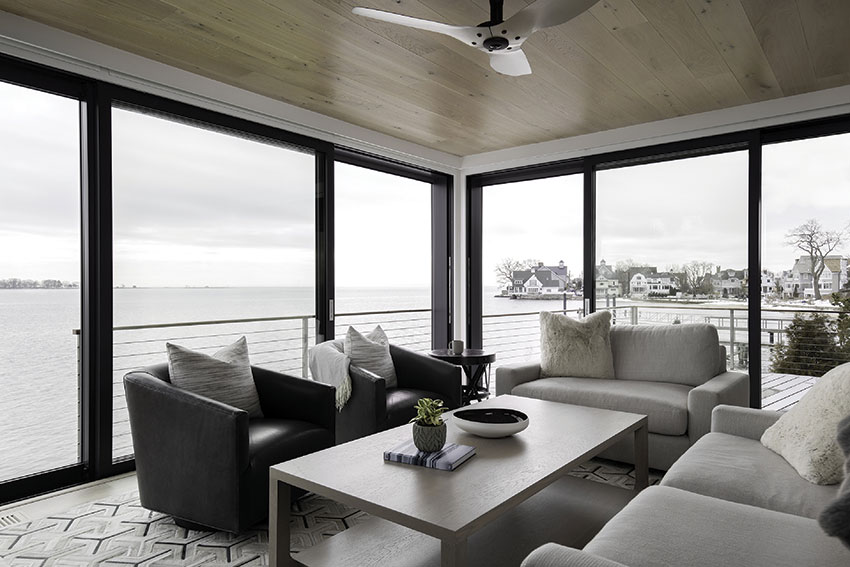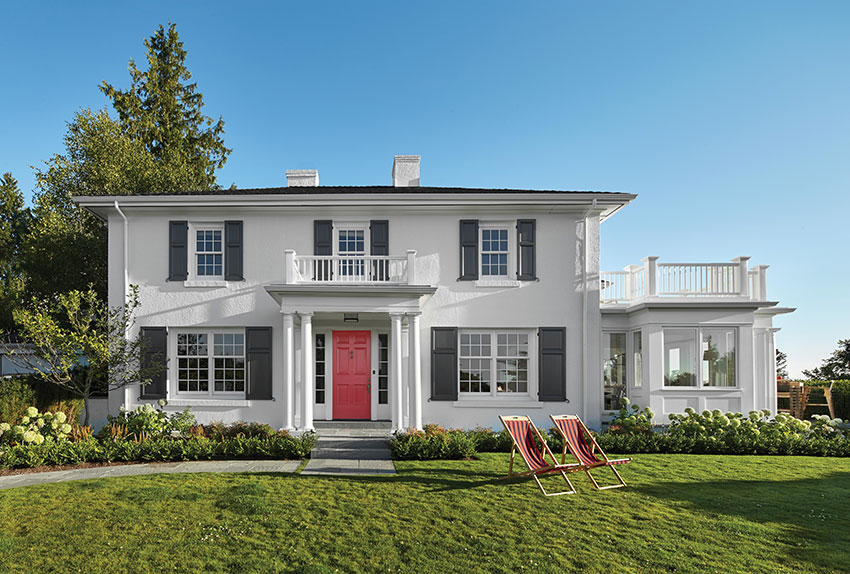Big Glass, Big Returns
 1 AIA LU/HSW; 1 IDCEC CEU/HSW; 0.1 ICC CEU; 0.1 IACET CEU*; 1 AIBD P-CE; AAA 1 Structured Learning Hour; This course can be self-reported to the AANB, as per their CE Guidelines; AAPEI 1 Structured Learning Hour; This course can be self-reported to the AIBC, as per their CE Guidelines.; MAA 1 Structured Learning Hour; This course can be self-reported to the NLAA.; This course can be self-reported to the NSAA; NWTAA 1 Structured Learning Hour; OAA 1 Learning Hour; SAA 1 Hour of Core Learning
1 AIA LU/HSW; 1 IDCEC CEU/HSW; 0.1 ICC CEU; 0.1 IACET CEU*; 1 AIBD P-CE; AAA 1 Structured Learning Hour; This course can be self-reported to the AANB, as per their CE Guidelines; AAPEI 1 Structured Learning Hour; This course can be self-reported to the AIBC, as per their CE Guidelines.; MAA 1 Structured Learning Hour; This course can be self-reported to the NLAA.; This course can be self-reported to the NSAA; NWTAA 1 Structured Learning Hour; OAA 1 Learning Hour; SAA 1 Hour of Core Learning
Learning Objectives:
- Discuss the trend of big glass in windows and doors that achieve architectural aesthetics.
- List the emotional and health benefits operable windows and doors can provide when it comes to air, light, and biophilia.
- Explain glazing coatings as a critical element to improve energy efficiency and control solar heat gain.
- Describe important performance attributes architects should consider when specifying windows and doors.
This course is part of the Custom Home Academy
Big glass is a rising trend in single-family residential design. Architects looking for big-glass solutions have a myriad of window and door choices to achieve their aesthetic design goals. These solutions help achieve some of the most important elements in design—light, air, and views—which are key to the health and well-being of occupants. Too often, big glass solutions are seen as exclusive to high-end custom-built homes. However, today the concept of introducing light, air, and sweeping views to every interior space is attainable for many residential projects. Flexible, healthy, comfortable spaces that provide work-life balance are key goals in the post-pandemic life/work home environment. This course looks at some of the latest window and door designs that optimize glass and shows how a focus on light, air, and views delivers big returns for both architect and occupant.

Photo courtesy of Marvin
This Norwalk residence uses multi-slide doors and casement crank-out windows to optimize the view as if the home is floating on Long Island Sound.
BIG GLASS ON THE RISE
The world of glass—and big glass, in particular—is expanding. The term "big glass" is used to describe the increasingly popular trend for glass panels and assemblies that are larger than traditional windows and doors in residential design. These panels and assemblies allow more natural light to enter a space, offer opportunity for better ventilation, and provide more unobstructed views of the surrounding environment. Big glass can range from assemblies of smaller windows that provide a big-glass effect to large-panel windows and doors that appear to take up entire walls.
Big glass is popular in architectural design because it creates transparency and openness, blurs the lines between indoor and outdoor spaces, and contributes to the health, safety, and well-being of occupants. But its popularity has soared even higher in recent years. In the past, more glass meant high energy bills, drafty interiors, outside noise, and aesthetic limitations.
Modern glazing systems are stronger, more energy-efficient, and offer better insulation than previous versions. With the use of advanced coatings, glazing, and insulation, architects can design buildings that are not only visually stunning but also environmentally friendly and more durable. In the long run, durability can translate into cost savings.
Big glass is popular because of the trend toward a more contemporary and modern aesthetic in home design which lends itself to clean lines and larger windows and doors. It is also popular because of the growing trend of sustainability and energy efficiency in architecture. Larger-scale window and door assemblies can help reduce energy consumption by allowing more natural light to enter, reducing the need for artificial light. By leveraging quality window and door solutions with the appropriate U-Factor, Solar Heat Gain Coefficient, and Visible Light Transmittance rating, a building's overall energy consumption can be reduced, which is increasingly important as society becomes more focused on reducing our carbon footprint.
These days, new innovations, technologies, and standards lead to big-glass products and designs that lead to window and door solutions that open up design options. Residential architects, builders, and developers can now incorporate natural light, views, and air that meet their aesthetic vision. And, just as importantly, it allows them to find solutions for homeowners living in a post-pandemic world in which health, safety, well-being, and sustainability are of the utmost importance.

Photo courtesy of Marvin
A Seattle-based 1910s-era colonial revival renovation features high-performance double-hung windows with a contemporary classic look that maximizes views but doesn’t clash with the original style.
Case Study: Minimalist-Inspired Home
On Long Island Sound, a new residential property demonstrates the innovative ways glass can transform the traditional notion of a beach house. The project evolved out of circumstance and necessity. Owners Kerry and Jed Stevens bought a small cottage in Norwalk, Connecticut with a prime view of the water and a more traditional, quaint, beachside aesthetic. It seemed like a dream.
But there was a problem: The cottage was located in the flood zone and did not comply with code. Initially, the Stevens, along with their architecture firm, planned to do a renovation that involved lifting the house out of the floodplain, getting it compliant with FEMA regulations, and making improvements from top to bottom. After further inspection, the firm found more items on the interior that weren’t compliant, so the decision was made to raze the old house and build a new one.
Taking advantage of the opportunity, the Stevens agreed on a whole new design–a total departure from the traditional charm of a seaside cottage. They decided to go big with a design that utilizes the latest technology in glass. The newly constructed home is no longer at the mercy of the floodplain. It is a much edgier version of seaside living–a home that juts over the water and captures ocean views from a multitude of vantage points with a design featuring clean lines, narrow profiles, and large expanses of glass. Kerry likens the modern, minimalist design to creating the sensation of being in a boat on the water.
The project used casement windows with sashes hinged on one side, which crank outward. Multi-slide doors also provide that open, big-glass feel. Both windows and doors are designed with energy-efficient double-pane glass featuring Low-E2 coating and argon-gas fill. This type of glass, along with overhangs and internal shades, helped optimize the home to effectively manage solar heat gain. In the summer, it rejects the sun’s heat and damaging UV rays. In the winter, it reflects heat back into the room, offering comfortable temperatures in all types of weather.
The multi-slide doors, located in the master bedroom and living room, allow fresh air to filter through the house in the warmer months. The combination of ventilation and visual seamlessness between indoor and outdoor spaces provides the sensation of being outdoors–even when you are inside.
This project’s windows and doors are made from a durable high-density fiberglass exterior and a frame design that offers high-end thermal performance in even demanding climates. The casement windows have a design pressure (DP) rating of 50 and the multi-slide doors have a performance grade rating of PG45 (DP and PG will be discussed in more detail later in this CEU). In addition, the architects were able to specify rated and certified performance door sills that could be dropped down into the door frame and still stand up against harsh northeast weather – a test they have already endured.
The Norwalk project looks modern for many reasons. It uses concrete, steel, and raw wood, and clean lines. Big glass is used in this case as a way to both elevate the aesthetic and tie it all together while still maintaining functionality and durability required in such an often unpredictable environment.

Photo courtesy of Marvin
The owners of this Seattle-based renovation project chose high-performance windows that would maximize views but still maintain the home’s original colonial revival style.
Responding to Human Needs
The pandemic and associated work restrictions created a dramatic surge of interest in home designs—for both new and renovation projects. For many people, the newfound reality of spending much more time at home instead of at work or out in public places motivated many to make changes in the places where they live. Some of those changes were based on the need to have adults working from home, school children learning from home, or a mix of people simply performing more of their daily activities from home than was previously typical.
A renewed interest in home design and renovations designs and renovations happened relatively quickly once pandemic shutdowns began in the U.S. In a survey conducted by Houzz in June 2020, 71% of homeowners reported that they were thinking about or actively working on home improvement projects, with 60% of respondents citing the pandemic as their reason. Additionally, 47% of respondents said they were upgrading home offices or workspaces, and 42% were improving outdoor living spaces.
Google Trends also showed early data indicating that browser searches for home office ideas increased by 110% between March and May 2020. And, in a survey conducted by the American Institute of Architects in August 2020, 68% of architects reported that they had seen an increase in demand for home offices, and 58% had seen an increase in demand for exercise rooms.
Innovations in home design inspired by pandemic life have not decreased, even as many people have returned to offices. The America at Home study—a nationally representative survey of U.S. adults ages 25-74 with household incomes of $50,000+ per year—shows an increase among Americans since the pandemic in the perception that a home needs to be designed to support health and well-being. The desire to customize homes in more innovative ways—and with that central goal in mind—has led to an increase in new products and technologies. And those technologies—along with performance standards and code requirements—help architects realize architectural visions in which they can provide clients better access to natural light, air, and views.
In the case of big-glass designs, design flexibility stems from the variety of high-performance window and door types that are available to architects. And, while large-scale windows and large-size doors can maximize access to light, air, and views in spectacular ways, they need not be restricted to homes with million-dollar views. Designing around any view (small container garden), incorporating well-placed windows and doors, and bringing in fresh air benefit homes of all sizes and locations.
Case Study: Queen Anne Update
A young couple purchased a 1910s-era colonial revival in Seattle’s Queen Anne neighborhood. They loved the home’s classic look and wanted to update it without compromising its character, charm, and period detail. To meet these goals, they worked with an architecture firm to come up with a plan that consisted of expanding and remodeling the kitchen and adding a new main bedroom with an ensuite bath. The crown jewel of the project, though, entailed building a sunroom on the west side of the home, providing unobstructed views of Puget Sound and the Olympic Mountains.









